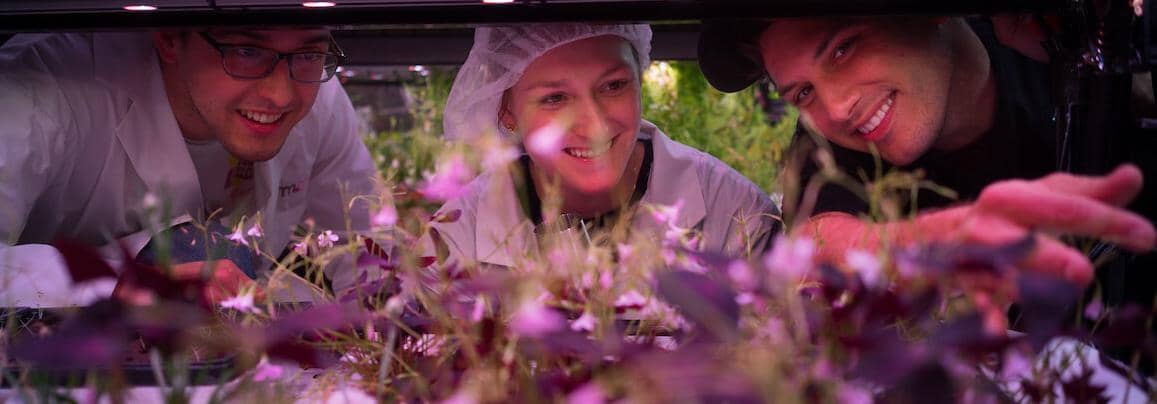Tight Squeeze
The BOSS Magazine
|January 2020
As more and more people pack into cities, urban farming could solve food challenges

The trends are pretty clear. The world’s population is going to grow, perhaps reaching 10 billion by 2050. About two-thirds of those people will live in cities. As much as 80 percent of food consumption will take place in cities, the Ellen MacArthur Foundation — which champions the circular economy — estimates. So, we’re going to need more food, and we’re going to need it in cities. Enter urban farming.

INDOORS
Cities, you may have noticed, are crowded. There’s not exactly tons of room for the traditional acres of crops we’re used to viewing as traditional farming. To work around this, urban farming utilizes what cities tend to have in spades: warehouses. They make perfect homes for vertical farms that don’t require soil or sunlight. Plant roots are immersed in a nutrient-rich solution or sprayed with one, and lighting provides the ultraviolet rays the sun normally would.

Unsurprisingly, the New York City area is at the forefront of the urban farming industry, which Allied Market Research predicts to be worth $12.77 billion by 2026. Oishii strawberry farm in Kearny, N.J., recreated the conditions under which Japan’s most delicious berries thrive, and its omakase berries have found their way to some of New York’s best restaurants.

यह कहानी The BOSS Magazine के January 2020 संस्करण से ली गई है।
हजारों चुनिंदा प्रीमियम कहानियों और 10,000 से अधिक पत्रिकाओं और समाचार पत्रों तक पहुंचने के लिए मैगज़्टर गोल्ड की सदस्यता लें।
क्या आप पहले से ही ग्राहक हैं? साइन इन करें
The BOSS Magazine से और कहानियाँ

Reboot Magazine
PLAYING IT FORWARD
Enduring values meet future forward technology at Seneca Gaming Corporation
5 mins
October 2025
Reboot Magazine
TECHNICAL DIFFICULTIES
SMB LEADERS SPENDING 13 HOURS PER WEEKK ON TECH-RELATED ISSUES
2 mins
October 2025

Reboot Magazine
HARDENING THE EDGE
PHYSICAL SECURITY AT DATA CENTERS IS JUST AS IMPORTANT AS ITS VIRTUAL COUNTERPART
4 mins
October 2025

Reboot Magazine
A LEVEL PLAYING FIELD
For years, small businesses were at a technological disadvantage. New tools are changing the dynamic, Constant Contact's Frank Vella tells us.
4 mins
October 2025

Reboot Magazine
MIND OVER MATTER
AI IN MENTAL HEALTH CARE HAS TREMENDOUS POTENTIAL. IF IT'S USED RESPONSIBLY.
3 mins
October 2025

Reboot Magazine
WORLD WIDE WEIRD
Hacks are serious business. But sometimes, they can be silly.
3 mins
October 2025

Reboot Magazine
UK'S ONLINE SAFETY ACT
The near-decade of review is over, and the Act is in full force - but the controversy carries on
4 mins
October 2025

Reboot Magazine
VALUE BEYOND MEASURE
Wealthtech puts advisers' and investors' minds at ease
3 mins
October 2025

Reboot Magazine
THE TECHNOLOGY OF BEAUTY
EVEN THOUGH IT'S FAR FROM MATURE, THE INTEGRATION OF AI INTO AESTHETIC MEDICINE IS ALREADY MAKING THE PRACTICE SAFER AND MORE EFFECTIVE
4 mins
October 2025

Reboot Magazine
The Jolt They Need
TWO AMERICAN STAPLES BETTING ON EVS' FUTURE
3 mins
October 2025
Translate
Change font size

